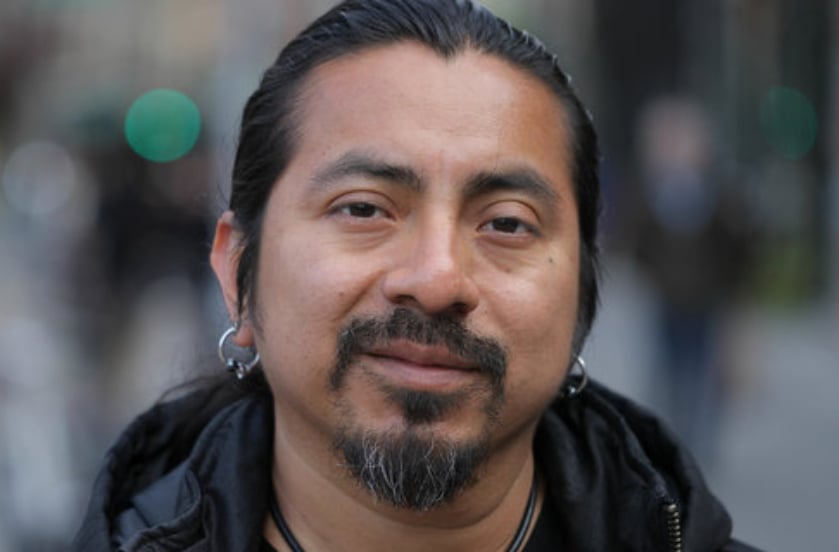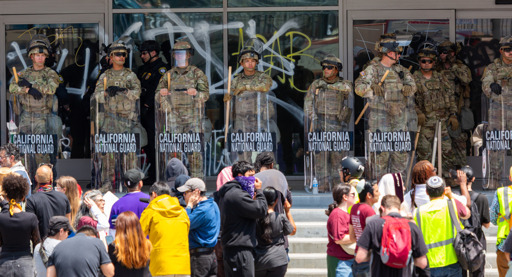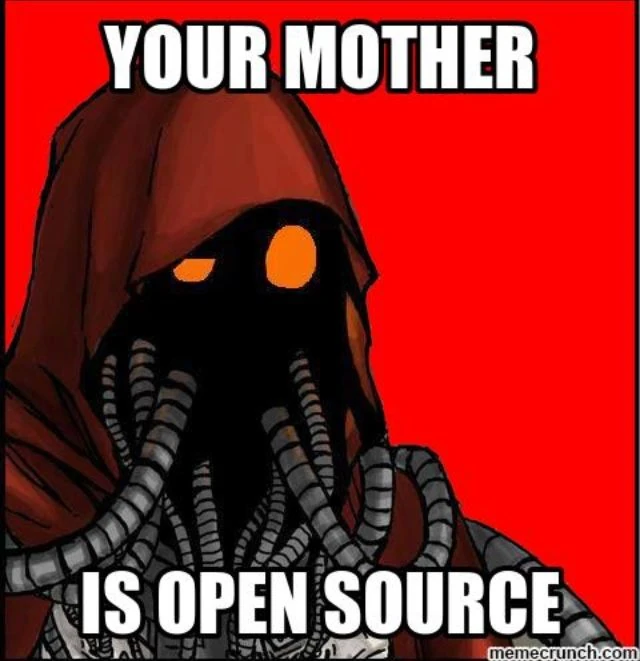I keep seeing this but the claim is dubious at best and feel like conflating correlation with causation. While the examples cited were largely non violent they had aspects and sub movements advocating violence and destruction, so any outcomes cannot be isolated in a way to make this claim.
She doesn’t claim that you need to hit 3.5% and then you’re magically able to overthrow an authoritarian government.
She notes that disciplined nonviolent resistance, focused around a concise and relatable message, is a characteristic of successful movements. And that turnout number is a common artifact of movement who are focused, strategic, and disciplined. The number in and of itself is not the goal.
If this is what I think it is, it’s also highly selective in what to include. If it wasn’t successful it’s not included, for some reason or another. It’s somewhat useful, but it’s far from being a rule.
Listen to the first half of this podcast as Chenoweth explains what the cavets are to this rule. She describes it more of as a descriptive rule not prescriptive rule, and suggests many other circumstances going on in addition to achieving this rule. Further régimes have adapted to this rule since it was first discovered and she’s still truing to see what that adaptation means.
You Are Not So Smart: 313 - The 3.5 Percent Rule - Erica Chenoweth
Episode webpage: https://youarenotsosmart.com/
Yeah, and being a counter force within the intention of not permitting that to happen by generating division between the protesters for example. Still, the point of the 3,5% rule is not like something written in a stone, just a statical analysis who have that fact and investigation is not finished, and new events may demonstrate something else.
I feel like this 3.5% shit is a psyop to get people to do planned, permitted, and non-disruptive protests that have zero chance of actually accomplishing anything instead of organizing strikes, sit-ins, shutdowns, and other things that actually work, because hey, everything will just magically work out if we just get to 3.5% right? No need to turn the screws on the people in power or actually disrupt anyone’s day and force them to listen to your platform when you can just have a nice day in the sun with your quirky sign with all your friends and it will magically make change happen because there are a lot of you.
Problems is that people are just kind of seeing “3.5%” and they’re not actually listening to the details behind it.
The 3.5% is a sign that you’re organizing effectively. The number in and of itself is not the goal.
Also, the research noted that, once an authoritarian regime starts to crack down on protests, that well organized machine usually has to flip to other nonviolent tactics like general strikes, shutdowns, and pressuring regime supporters to join the resistance.
it 100% is.
The authors coined a rule about the level of participation necessary for a movement to succeed, called the “3.5% rule”: nearly every movement with active participation from at least 3.5% of the population succeeded.[8][9] All of the campaigns that achieved that threshold were nonviolent.[10]
Removed by mod
It’s important to remember that Trump isn’t the problem, he’s a symptom.
The pressure needs to increase until the problem is solved.
He may be a symptom but he is also a focusing lense, think of him like a magnifying glass starting fires. The sun is still a problem and the conditions for fire are still present but at the very least without the magnifying glass actively starting fires it’s a lot easier to deal with.
Yeah what’s the metric for success in protesting a cause so embedded in the roots?
You see the numbers that turned out for No Kings? Get those people to camp out in the streets and give it two weeks.
I have read books by Mark Penn and Malcolm Gladwell, which talk about that magical 3.5% as a “Tipping Point” that can kick off a trend. It’s not guaranteed, but historical records indicate that it takes at least 3.5% to reach critical mass.
In America, that’s about 11.5 - 12 million people.
FWIW, the rightists seem to have picked up on a similar number:
The group’s name derives from the erroneous[6][7] claim that “the active forces in the field against the King’s tyranny never amounted to more than 3% of the colonists” during the American Revolution.[8]
Fascinating idea and I look forward to reading the book. As someone who has never seen protests be that effective as compared to other constituency pressure mechanisms, it’s an interesting counter point.
The OP’s article indicates 3.5% of the population, which for the US at the moment would be around 340 million. 3.5% would be 11.9 million people.
Rough guesses are that the protest saw about 4-6 million people out yesterday.
I’m particularly curious about the paper’s coalition building concepts about tying immigration to other value such as worker rights, private sector interests such as agriculture, racial justice, etc.
Beyond this I wonder if the analysis from ten years ago takes into account the technological isolation, manipulation, and echo chambering of modern politics. I would venture to guess that the 3.5% might need to be higher in a population that doesn’t listen to ‘untrusted opinions’.
Last count I saw from 50501 was about 8.6M. Traditional media is reporting about 5M. 50501 is probably including even small protests as this was done nearly everywhere including less official ones in small towns while trad media is probably only including the fully official larger ones.
Or trad media is doing what it always does, minimizing progressive turnout and exaggerating right-wing numbers.
With protests going on all over the country, I don’t see how ANY count can be accurate. Further, there are many supporters who would never attend a protest. I am one of them. I encourage others to go, but I can participate in other ways, like actively posting on social media.
Add up the protesters, the keyboard warriors, and the many other forms of resistance, and we’ll hit the 3.5% mark.
Obama’s old speechwriting director just interviewed the researcher who uncovered this phenomenon. Pretty fascinating conversation about what successful authoritarian resistance movements have in common.
Must be very interesting. I previously listen she in David McRaney’s podcast YouAreNotSoSmart with not knowing what about that rule and understand that is not like a stone rule, and more an statistical analysis who shows that even minor percentages of people can make it. I’m sure that in the video that you refers, she solves many of the doubts that that such a statement generates.
She didn’t “uncover” this phenomenon. Mark Penn was the Clinton’s pollster, and he published his book Microtrends in 2007. Malcolm Gladwell’s Tipping Point was published in 2000. The concept of the “Tipping Point” has been known and studied for a long time. .
What was new was the quantification of participation.
I believe both Penn and Gladwell used the 3.5% quantity for a Tipping Point.
While this article doesn’t say 3.5% showed up… It’s dubious that the claims of there being 3.5% of the population engaged in the No Kings Day protest is correct exactly because some of the numbers offered magically hit that 3.5% mark. People are starting with the conclusion they want and making the numbers match to reach it. There’s a range of estimated participation in No Kings Day, and most estimates are below the 3.5%. It was an amazing turnout that the press largely ignored.
What it doesn’t say is it still takes orginized violence to achieve the goals.
There’s a breaking point of civil disobedience when they are no longer able to control the sheer number of people.
Actually, her research says the complete opposite. Violence significantly lowered the odds of being successful.
I don’t think its a matter of violence vs non-violence. Even in the samples provided by the article, its a matter of willingness to commit what would otherwise be criminal acts. Ghandi was successful not because of the Salt March but because they created the Declaration of Sovereignty and Self-rule and refused to pay taxes until negotiations were made.
I remember Penn and Teller did an episode that touched on this on a show they had. The big take away was there is a difference between doing good and doing something that makes you feel good. What’s accomplished by a sit-in on a courthouse lawn on the weekend that you filed and received a permit to do from the city? People like to compare stuff like that to the 1960s civil rights movement, but here’s the thing: Rosa Parks not giving up her seat wasn’t a social faux pas, it was a criminal act in Alabama.
Obstruction and resisting authoritarian rules are key, but when looking at the sum of violent and nonviolent movements, the nonviolent movement had a higher percentage of wins.
And when researched looked into that finding, they learned that nonviolent actions were more successful at attracting allies, and violent resistance played into authoritarians hands. Authoritarians want to use “protection” as a way to stop resistance.
That article is probably not the best way to support that idea though. It mentions “when 3.5% of its population actively mobilized against it” but doesn’t explain what “actively mobilized” even means. It talks about how effective non-violence has been in other countries but then caveats that to being when an independent judiciary was present. It even uses Kilmar Abrego Garcia to support that idea, but fails to mention that a lower court’s decision was ignored and the only reason the SC was involved was because the administration said it didn’t have to listen to them.
Obstruction is good, but ultimately if you are not at risk of losing anything by that obstruction, it likely isn’t an effective way to accomplish anything. That’s even if you could consider it obstruction. If you are permitted to have a rally then you are not obstructing anything. You’re just having a good time. Municipalities don’t approve permits that obstruct, its the whole reason for permits.
that is 100% bullshit. if you look at all of human history, violence has by far been more effective.
Removed by mod
So if we get 3.5% of the population to stand in a field the fascist have to just give up? Swiper no swiping?
Grow up dude, use your brain to figure out what happens in between aggregating people and fascists being removed from power.
Grow up dude
Can we dial it down? This is Lemmy, not X. We don’t need to treat each other poorly in order to have a conversation.
He wants other people to fight his battle, when he couldn’t even be bothered to vote.
You see it around this site all over.
I’m completely willing to fight my and YOUR battles for us.
Every right you have was taken from those in power with the violence and blood of workers
You need to stop preaching propaganda meant to keep us domesticated
I agree that probably someone’s blood is getting spilled in the process of gaining rights but it could be, and often is, the blood of the nonviolent protestors, and I think acknowledging that is core to minimizing the bloodshed. Call me a fool for thinking the fascists are still human I guess.
Every right you have was taken from those in power with the violence and blood of workers
MLK, Susan B. Anthony, and Cézar Chávez would disagree with that statement.
MLK certainly gave his blood for the cause.
“Riots are the voice of the unheard” -MLK
So you were right with 2/3 of your cherry picked examples.
Clearly you think fascists will just give up randomly once we stand around holding signs long enough. I don’t think they’ll do that.
I’m done engaging with you.
Clearly you aren’t since you couldn’t even be coerced to vote.
I voted, fuck off and take your pussy gotcha with you
3.5% = nothing considering the orange traitor ignored it, the plotiicians ignored it and now its business as usual with the orange man doing hid corrupted shit.
Let me know how these kumbaya protests help. Narrator: they dont .
Great moment to work for it… And it is possible that a minor percentage than that also will be enough, according to the autor of the rule.
Another interesting interview for better understand this investigations is the one done by David McRaney in his podcast You Are Not so Smart. He is a great host and solve many wrong ideas that comes to peoples mind (me included) when you listen the rule for the first time.
You Are Not So Smart: 313 - The 3.5 Percent Rule - Erica Chenoweth
Página del episodio: https://youarenotsosmart.com/
so i guess this politics sub is going to be just as fucking dumb as the politics sub on reddit.
boot licker post.
It tells us that people love the system telling them they are rebelling correctly, according to the system. “You can’t fail if you keep doing things the way you’re told!”
It only works when politicians are worried about getting reelected. When fighting dedicators it doesn’t really work that way.
All of this research is around overthrowing authoritarian dictators.
Where was an authoritarian dictator abolished without armed conflict with rebels getting external support (like in Syria)?
Mass protests in Belarus - no change
Mass protests in Venezuela - no change
Mass protests in Iran - no change
Mass protests in Turkey - no change
There isn’t a world where removing fascists from power doesn’t take organized violence.
The people wishing to delegitimize violent protest are either ignorant of history or actively fighting against change.
The research didn’t say “mass protests and they’re out.” It simply shows the key characteristics that make a resistance more likely to be successful. And nonviolence, a focused message, and high participation are a good way to increase your odds.
Can’t they just go to Cuba if they want socialism?
Can’t you just get an education since you need one?
Education doesn’t give livable wage anymore. My sister has a master degree and she barely makes the equivalent of 10 dollars an hour
Skill issue. I’m guessing it’s genetic too judging from your comments.
Feeding the tolls I see
Well yes, I am white. I don’t need education, just guns.
You ignorant piece of shit there is no socialism in Cuba. Its ran by a dictatorship.
Please shut the fuck up.
Signed - a Cuban.
All I know is that Cuba is somewhere in the solar system.
Possibly on earth.










